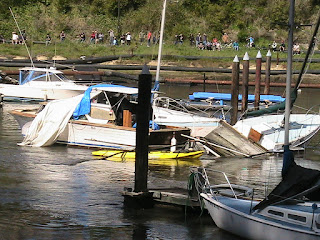The Central Coast of California is a destination spot for thousands of tourists every year. They fly in, relax on the warm, sunny beaches, enjoy their favorite foods, meet with family and make new friends. Rested and replete, they fly on to their next destinations, their feathers shining with new energy and vigor.
California beaches not only play host to black-legged surfers, golden haired sunbathers and rosy-crested vacation renters. They’re also home to avian tourists, such as Dunlins, White-rumped sandpipers, and Ruddy turnstones.
But all is not well for our feathered visitors. Habitat loss along the birds’ migration routes are making it increasingly difficult for migratory species to complete their journeys, and it’s not a result of climate change.
“About half of the shorebird species in North America are in decline, primarily due to habitat destruction and degradation. The world’s growing coastal population continues to increase the encroachment of people into shorebird habitat.”
Birds at a Southern California beach: seasonality, habitat use and disturbance by human activity, Kevin D. Lafferty, Biodiversity and Conservation 10: 1949–1962, 2001
Here on the Central Coast of California, shorebird habitat has decreased over 90% as a result of coastal human development. In areas where the shoreline is protected from new development by the California Coastal Commission, human recreation is further disturbing shorebirds attempting to rest, feed and breed on those same beaches.
The growing number of off-leash dogs on beaches are an increasing threat to migratory shorebirds, when they chase and disturb birds attempting to rest and feed before continuing their migratory flights. Although dogs do not remove habitat and infrequently kill birds directly, dog disturbance causes birds to interrupt their feeding and expend greater energy in flight.
Impacts to migratory bird species are a result of the cumulative effects on reproduction and chick survivorship. Birds forced to forage less effectively may not build fat reserves needed by stressed and depleted migrants who must rest and feed to successfully resume their migratory journey. (Lafferty, 2001)
The problem is compounded by the international travel agendas of migratory birds. While many countries protect migratory species passing through their territory, far too many do not, leaving dangerous gaps in which critical resting and breeding habitat is rapidly becoming compromised.
Researchers track migratory birds’ routes to see if they’re venturing through protected areas or destroyed habitats. CSMonitor.com
Individual countries may protect migratory birds but the great length of their journeys are endangered. Scientific American
Migratory birds ‘lack world protection. BBC
Migratory bird species are dealing with very real physical threats to their survival. International studies of avian migratory patterns must be used to create new protected areas in key locations to allow migratory birds to continue unmolested throughout their global ranges.
















